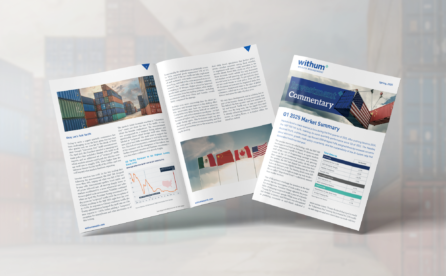“It is the obvious which is so difficult to see…” Isaac Asimov
Should the Fed have seen this coming? Is there no one at the Fed that does contingency analyses? We could go on…
It is hard to believe that the Fed did not think that raising rates as fast and sharply as they did would have some consequences, and if the Fed is doing any contingency analyses, it missed the fact that some banks could run into trouble. Let us just take a minute to think this through in our much less economically educated minds…
If rates go up a lot, who and what will be most affected?
The first thing that comes to mind for an average person is mortgage rates. Logic dictates that this would negatively affect the affordability of housing and subsequently housing prices. When this variable is taken into consideration alone, that would be the likely conclusion. Currently there is another factor that comes into play-the number of available housing units. Since this is low, it has mitigated the impact of higher mortgage rates on housing prices.
The next level “what if” scenario involves the impact on those holding bonds because as rates rise, the prices of bonds decrease (any bond with a lower coupon than a current bond of equal maturity and rating must be cheaper in price to make up the difference in yield). Also, the longer the bond (and the smaller the coupon) the more volatile the price movement will be. This is known as the “duration” of the bond (the lower the duration, the smaller change in price for each 1% change in interest rates). When rates finally hit zero in the pandemic, there was a high probability that rates would rise, and long maturity bonds would suffer large price declines when interest rates went up.
Aside from retail investors, who holds a lot of bonds?
Banks! So how could this affect them? Well, if they hold the bonds to maturity and get back par, all is fine. But what if they must liquidate them or some of them? In what scenario, would this happen? Well, the large money center banks are well capitalized because of regulations put in place post 2008, but what about the other banks that were not subject to these rules, particularly in industries that are elevated risk and/or growth-oriented? When rates rise, there will always be less cash going into risky ventures (think crypto). Also, the present value of growth companies (think tech, biotech) is lower as projected earnings are discounted back at higher rates. Do you see where we are going with this? The banks with exposure to these “idiosyncratic” areas were most vulnerable to have some redemptions. As we have seen recently, with Silicon Valley Bank and Signature Bank, there was a lack of risk management and some banks failed to properly hedge their interest rate exposure.
So, while raising rates rapidly might solve our inflation problem, this will not occur without consequences. I think the consequences the Fed was focusing on was a hard economic landing, not other contingent or” idiosyncratic” events. The truth is, we can all play armchair quarterbacks, but we do not stand in the Fed or Treasury’s shoes and do not have the same information at our fingertips. It is worth pointing out that all actions have consequences, some good, some bad, and we must deal with both. No one has a crystal ball, but our big money center banks are much better capitalized than they were in 2008, and, hopefully, this “crisis” will be averted without systemic contagion because of that. So far, the steps taken have been effective. But like all gray swan events, we must continue to monitor the hole in the dyke and take what actions are needed to contain any significant negative impact.
The other obvious question that arises from all of this is: is this anything like the Great Financial Crisis (known affectionately as the GFC). Should we be worried? While there are some similarities, there are also significant differences. Recall that the GFC occurred as housing values steadily declined and rates rose. As a result of liberal qualifying standards for mortgages and a preponderance of adjustable-rate mortgages, many borrowers defaulted. Washington Mutual failed as did Bear Stearns and Lehman Brothers. Today both banks and borrowers are in better financial shape. Banks have more stringent capital requirements and borrowers have lower loan -to- value mortgages and higher savings balances. While there are small declines in housing prices in select areas, the housing market remains fairly strong due to the lack of inventory and available housing units. While it is often said that history repeats itself, it more often “rhymes;” that is, some events that transpire sound the same, but the details of the setting in which they occur are not identical and may significantly affect the outcome. Having said that, it is not prudent to ignore the lessons of the past.
Please feel free to reach out to your advisor if you would like to discuss this topic in more detail or have any questions about your investment strategy.


